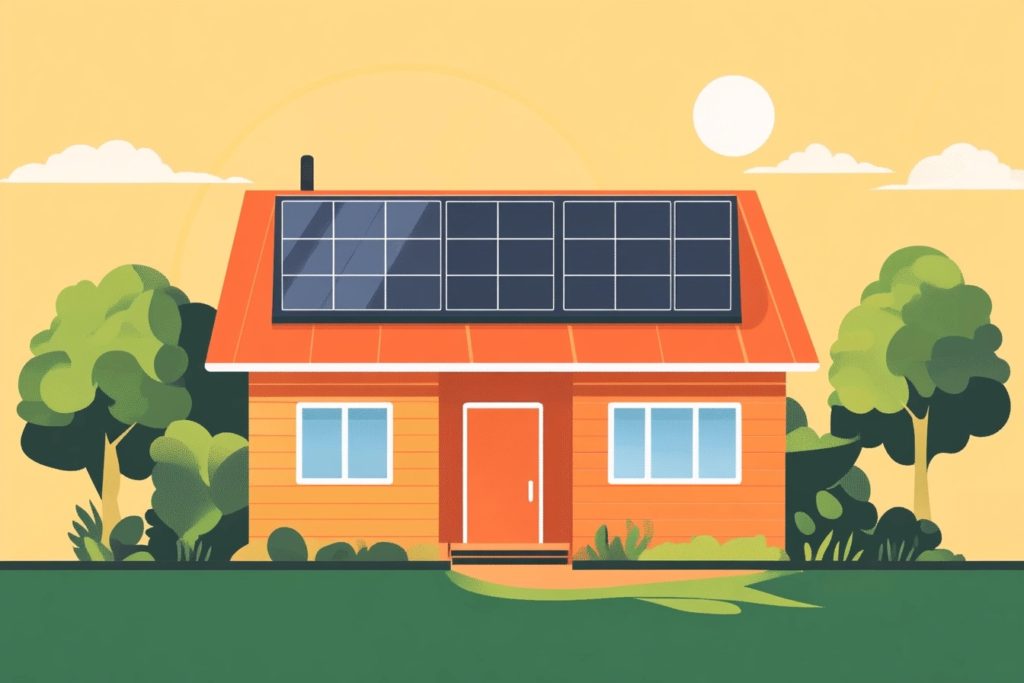These days, everyone knows that installing solar panels for your home is an environmentally friendly decision. However, some people still underestimate how much money they can save with a rooftop residential solar system. In reality, you can save so much cash with home solar panels that they’re actually an excellent investment with a better rate of return than many traditional forms of investing.
Calculate Your Solar Payback Period
To understand how much money you can save with residential solar panels, you need to calculate your solar payback period. This is an estimate of how many years it will take for you to pay off your initial investment and start making money on your solar energy system. If you’re wondering how to calculate the payback period for a solar system, let’s dig into the details.
- Start with Your Expenses: Let’s start with the expenses. The biggest cost is the purchase of your solar panels and related equipment. This figure can vary considerably depending on the size and location of your home, and whether you purchase your solar system up-front or on a solar loan or lease. There can also be some expenses for ongoing maintenance, although these are usually quite low because solar panels don’t require much upkeep.
- Analyze Your Benefits: Once you’ve figured out how much you’ll need to spend, the next step to calculate a solar payback period is to analyze your benefits. Depending on where you live, your state could provide up-front incentives in the form of rebates and tax benefits. When it comes to ongoing benefits, you simply need to take a look at your energy bill and consider how much money you’ll save per month by generating your own power with solar panels compared to buying electricity from the utility company. When you determine your total expenses and your annual savings, simply divide the costs by the benefits to calculate your solar payback period.
- Shop Around: It’s important to shop around with several different solar installers to get the shortest payback period possible. Take recommendations from friends and neighbors, but don’t get too attached to any company before you’ve had a chance to analyze the costs and benefits for yourself. You might be surprised by how affordable some installers make this process!
For most American homeowners, the typical residential solar payback period is 8-11 years. When you consider that solar panels are manufactured to withstand a minimum of 25 years of use, a payback period of 12 years or less is typically considered to be a solid return. However, depending on which state you live in, you could get a payback period as short as just five years in a state like Hawaii.
An important element of determining how to calculate the payback period for solar panels is nailing down the variables that go into this equation. One is to consider how much electricity your home typically uses and whether your planned residential solar power system provides enough energy to entirely offset this usage. Then, you’ll need to determine how much it will cost to install your solar panels and associated equipment.
As we mentioned earlier, there are also solar incentives and rebates to consider. Some states, like Massachusetts, offer so many incentives and tax breaks that you can calculate a solar payback period of just four years in many cases. Unfortunately, if you live in a state like Mississippi that provides very few solar incentives (or none at all), you can expect your payback period to exceed 15 years.
Consider How Much You Pay For Your Electricity
Finally, it’s important to consider how much you pay for your electricity in the first place. Depending on your home’s location, the cost of electricity in different parts of the country can vary significantly. If you can take advantage of relatively inexpensive energy from your utility provider, that changes the math regarding how to calculate your solar payback period. In addition, if you can use net metering to offset the purchase of energy at night or on overcast days by selling your excess energy from sunny days back into the grid, your solar payback period will be considerably shorter than that of a homeowner with no access to net metering.
One of the biggest mistakes people make when installing residential solar energy systems is failing to properly calculate the solar payback period. To maximize your savings and choose the perfect solar power system for your home, simply walk through the steps outlined in this guide and figure out how long you can expect it to take for your solar panels to break even. No matter where you live or how much energy your home uses, there’s a solar solution for your needs.
Do you still have some questions about how to calculate the payback period for a solar system for your home? Perhaps you need some help determining how much energy your solar panels need to generate, or you want some more information about solar incentives in your area? Simply contact LGCY Power at 855.649.4019 and speak with one of our expert representatives today.
Our team members are highly trained in many different aspects of residential solar energy systems, and they can help you calculate the solar payback period for your planned system. We can also help you find the perfect solar installer, thanks to our 500+ partnerships with local consultants and installation companies. Contact us today to discover how LGCY Power can save you money and help you determine how to calculate the payback period for your solar panels!





